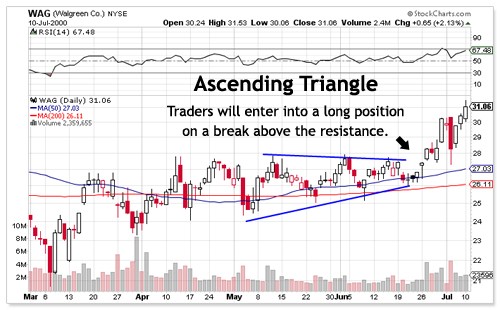Symmetrical Triangle Stock Charts Pattern Explained for You
Post on: 16 Март, 2015 No Comment

The Symmetrical Triangle can be characterized as an area of indecision.
Also known as a coil. it usually forms during a trend as a continuation stock pattern. And just as a wound up coiled spring holds enough tension to propel a toy, a coiling action in a stock can propel stock prices.
In the stock market, the tension builds on the increasing uncertainties of buyers and sellers.
2 trend lines are required to form a symmetrical-triangle.
Therefore, a minimum of 4 points are required to begin considering a formation as a symmetrical-triangle. The second high should be lower than the first and the upper line should slope down.
The second low should be higher than the first and the lower line should slope up. Ideally, the pattern will form with 6 points (3 on each side) before a breakout occurs.
For further in-depth information on stock market charts and stock chart patterns, check out this resource . which contains critical information to help you learn to use stock charts and technical indicators in a clear, simple and concise manner to improve your stock trading entries and exits.
The following are key points in confirming the symmetrical-triangle pattern:
- Prior Trend: In order to qualify as a continuation pattern, an established trend should exist. The trend should be at least a few months old and the symmetrical triangle marks a consolidation period before continuing after the breakout.

A break before the 1/2 way point might be premature and a break beyond 3/4 usually means loss of potency without meaningful price advances.
Second, a trend line can be drawn parallel to the pattern’s trend line that slopes (up or down) in the direction of the break. The extension of this line will mark a potential breakout target.
Conclusion
_______________________________________________________________














